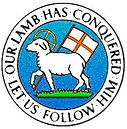
UnitedMoravianChurch
Our Lamb Has Conquered, Let Us Follow Him




The Moravian Church is one of the oldest Protestant denominations, dating back to 1457 in Europe and first coming to America in 1735. Moravians have a strong tradition of ecumenical work and are best known for their missionary work and rich musical heritage. The Moravian Church in North America is comprised of the Northern and Southern Provinces. The name "Moravian" started out as a nickname in eastern Germany in the 1720s because refugees belonging to the church came from Moravia to the estate of the wealthy Saxon nobleman Count Nicholas von Zinzendorf.
The official name of the Moravian Church is the Unitas Fratrum, or Unity of Brethren. This was the original name of the church when it was founded back in 1457 in the Bohemian forests. Today, the Northern and Southern Provinces of the Moravian Church in America are part of the worldwide Unitas Fratrum. In accepting other creeds of the Christian Church (such as the Apostles' Creed, Nicene Creed, the Augsburg Confession) and in its practice, the Moravian Church has always stood by its motto: "In essentials, unity; in nonessentials, liberty; and in all things, love."
The Northern Province of the Moravian Church in America, headquartered in Bethlehem, Pa., counts 23,000 members in 93 congregations in 13 states in the U.S. and two Canadian provinces. The Southern Province, headquartered in Winston-Salem, N.C., includes nearly 17,000 members in 58 congregations, which are located primarily throughout the Southeast. Moravian congregations can be found in California, Florida, Georgia, Illinois, Indiana, Maryland, Michigan, Minnesota, New Jersey, New York, North Carolina, North Dakota, Ohio, Pennsylvania, Wisconsin, Washington DC, along with congregations in Alberta and Ontario, Canada. The worldwide Moravian Church consists of 19 provinces with more than 900,000 members, half of which live in Africa.
The modern Unitas Fratrum (or Moravian Church) continues to draw on traditions established during the 18th century renewal. In many places it observes the convention of the love feast, originally started in 1727. It uses older and traditional music in worship. Brass music, congregational singing and choral music continue to be very important in Moravian congregations. In addition, in some older congregations, Moravians are buried in a traditional God's Acre, a graveyard with only flat gravestones, signifying the equality of the dead before God and organized by gender, age and marital status rather than family.
Friedensthal Moravian Church Christiansted, St Croix, USVI founded in 1755
The Moravians continue their long tradition of missionary work, for example in the Caribbean, where the Jamaican Moravian Church has begun work in Cuba and in West Africa where the Moravian Church in Tanzania has missions in Zaire and Uganda. This is reflected in their broad global distribution. The Moravians in Germany, whose central settlement remains at Herrnhut, are highly active in education and social work. The American Moravian Church sponsors the Moravian College and Seminary. The largest concentration of Moravians today is in Tanzania.
Some Moravian scholars point to a different formula as a guide to constructive debate about faith. This formula was first advanced by Luke of Prague (1460–1528), one of the bishops of the ancient Unitas Fratrum. Luke taught that one must distinguish between things that are essential, ministerial or incidental to salvation. The essentials are God's work of creation, redemption and sanctification, as well as the response of the believer through faith, hope and love. Things ministerial are such items as the Bible, church, sacraments, doctrine and priesthood. These mediate the sacred and should thus be treated with respect, but they are not considered essential. Finally, incidentals include things such as vestments or names of services that may reasonably vary from place to place. Learn More...

The Moravian Church